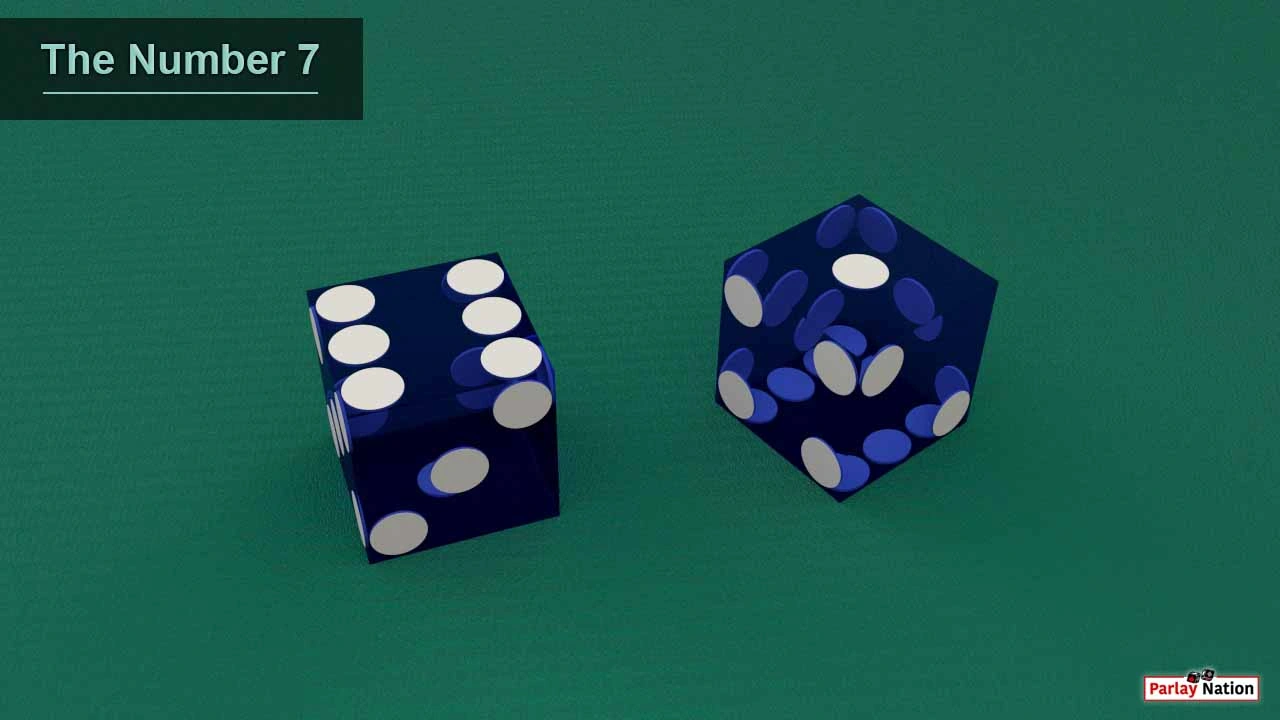The Stages of a Craps Game
One of the biggest problems new Craps players understand is that the game is played in two stages. Sometimes a seven will cause you to win while other time. Sometimes they take your money when 2 rolls. Sometimes they don't. Other times you may think you won a bet... but you didn't. It was the wrong stage of the game. Understanding the two stages of the game is key to understanding Craps.
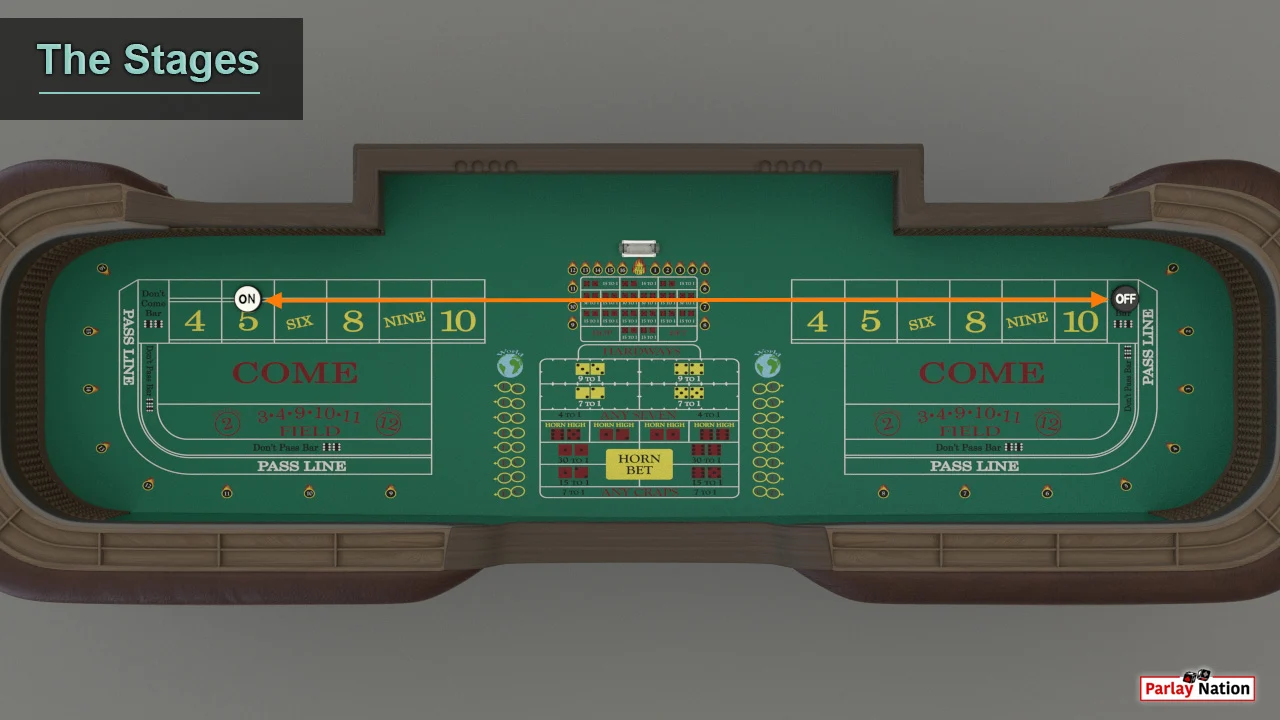
The Comeout Roll Is the First Stage of a Craps Game
The Comeout Roll, when the puck is OFF, is the beginning of the Craps game, when the shooter is trying to determine a Point for the rest of the table. Before they try for a point, though, the dealers have to get everyone situated. Sort of the calm before the storm. This is when new players should be buying in, and people who are leaving should be coloring up. It's the best time to be checking your phone if you have to, making a strategy for when the Point is established, or mentioning the number 7.
After buy-ins and color-ups, it's time to start betting. If you want to bet with the shooter, then get on the Pass Line. If you want to bet against the shooter, get on the Don't Pass. The Comeout Roll is also when most people bet their Proposition Bets like the World, the Any Craps, or the Yo.
Also, not all bets on the Craps table are 'working' or 'ON' during the Comeout Roll. When a bet is 'working,' it CAN win or lose on the next roll. When a bet is 'not working' or 'OFF', it CAN NOT win or lose on the next roll. The bets that are 'not working' or 'OFF' during the Comeout Roll are Place Bets, Come Bet Odds and the Hardways. You can always say to the dealer "Turn my ____ bets on" or say you want them "working." The dealer will put an ON lammer on top of one of your bets, and you are now ready to get paid if your bet hits.
One last thing to consider is that there are bets that you cannot bet during the Comeout Roll. Pass Line Odds, Don't Pass Lay Odds, Come Bets, and the Don't Come are all reserved for the next stage, the Intermediate Roll.
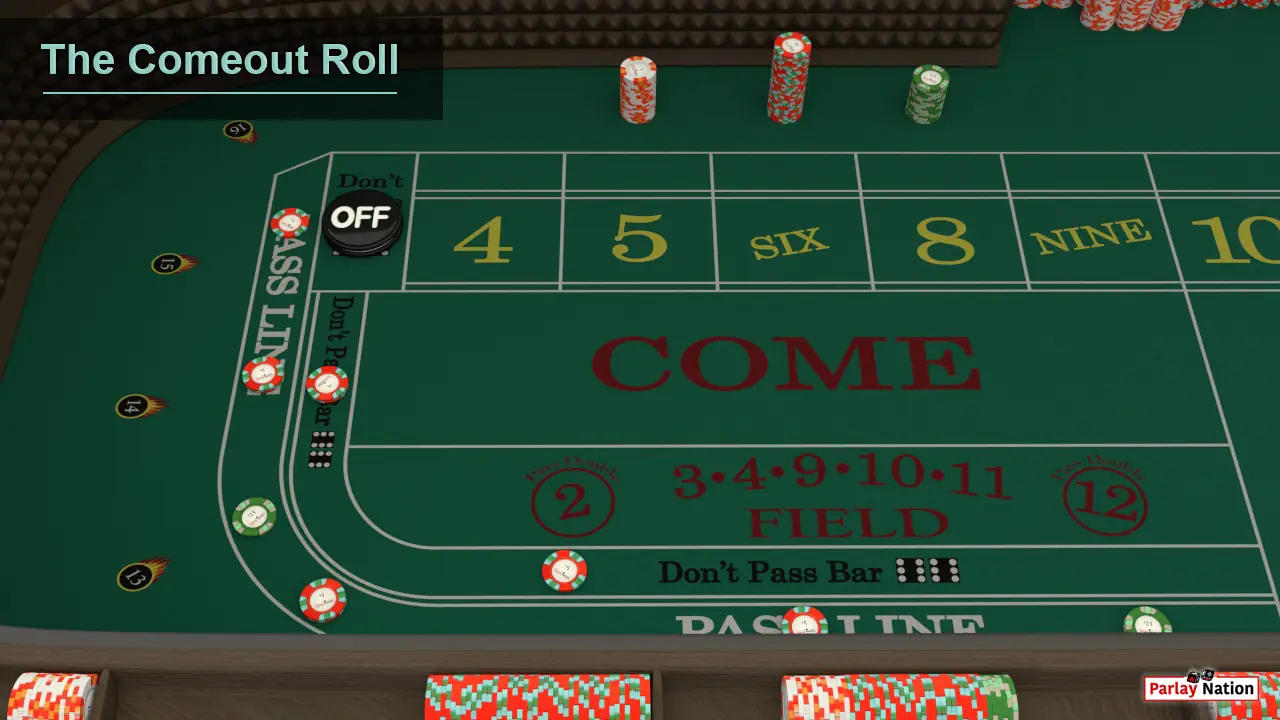
The Intermediate Roll Is the Second Stage of a Craps Game
The Intermediate Roll is when the Puck turns ON, and a Point has been established. This is when the shooter tries to make their Point so everyone at the Craps table can win. You start to see mountains of cheques on the layout, and your head explodes, wondering how the dealers keep track of it all.
The Intermediate Roll is where the betting world of Place Bets comes to life with Buys and Power Presses! Hardways being parlayed! Odds being maxed! And Come Bets being very boring... like they usually are. It's when nothing is OFF, and everybody is holding their breath every roll. It's when you really start to feel the essence of what Craps has to offer. The flow of a Craps game.
So don't go messing up the flow of the game by buying in during the Intermediate Roll. Don't be coloring up. Don't be sticking your hands on the table when the dice are out. Don't be making late bets, and be ready for what you want to do next. Keeping the flow of the game makes playing Craps so much more fun for everyone.
Keep in mind during the Intermediate Roll, you can take back or remove all bets from the table except for the Pass Line or a Come Bet after it has traveled into a Point. You can also say to the dealer "Turn my bets OFF" if you only want to skip a roll or two but remember to turn them back on when you're ready.
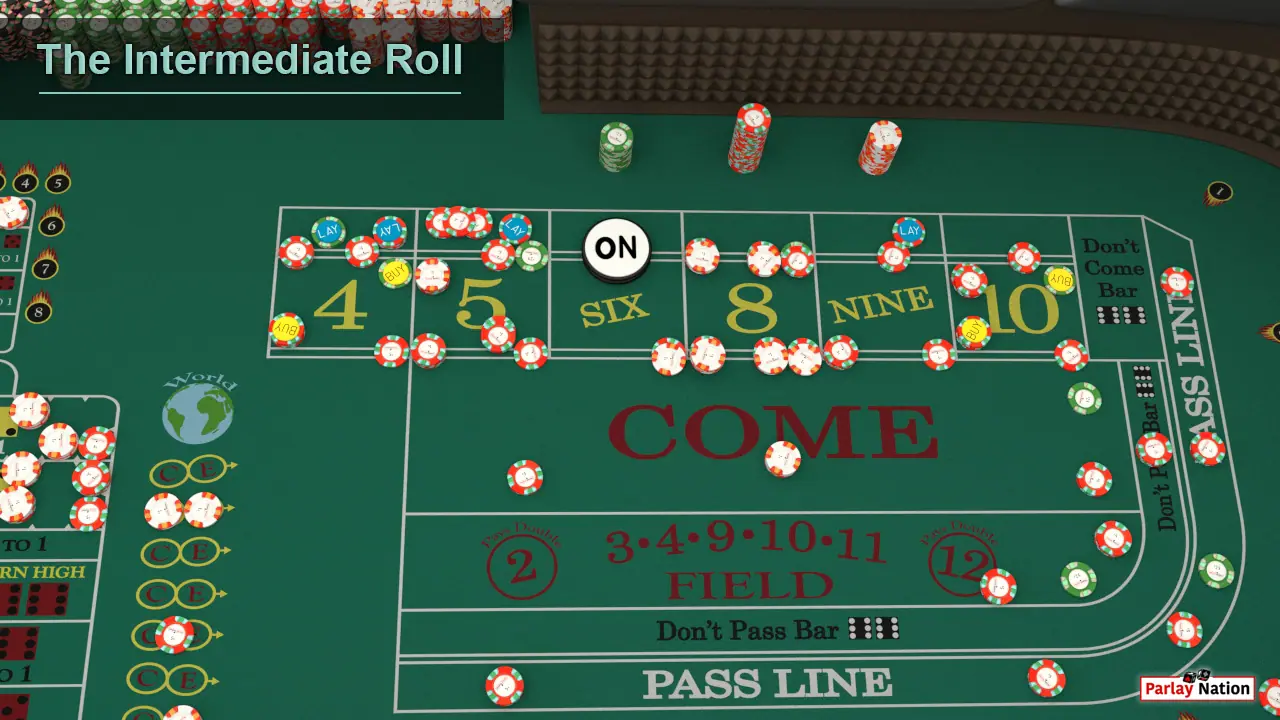
How Do You Buy In at the Craps Table?
It's suggested to wait until the Comeout Roll to buy cheques because some players feel that if you buy cheques in the middle of a roll it messes with the flow of the game, although it is your right to make a bet any time. You can walk up, put money on the table and tell them what bet you want. After the boxperson has counted out your money, one of the base dealers will hand you your cheques. You can then pick them up, put them in the rail, and be ready to play.
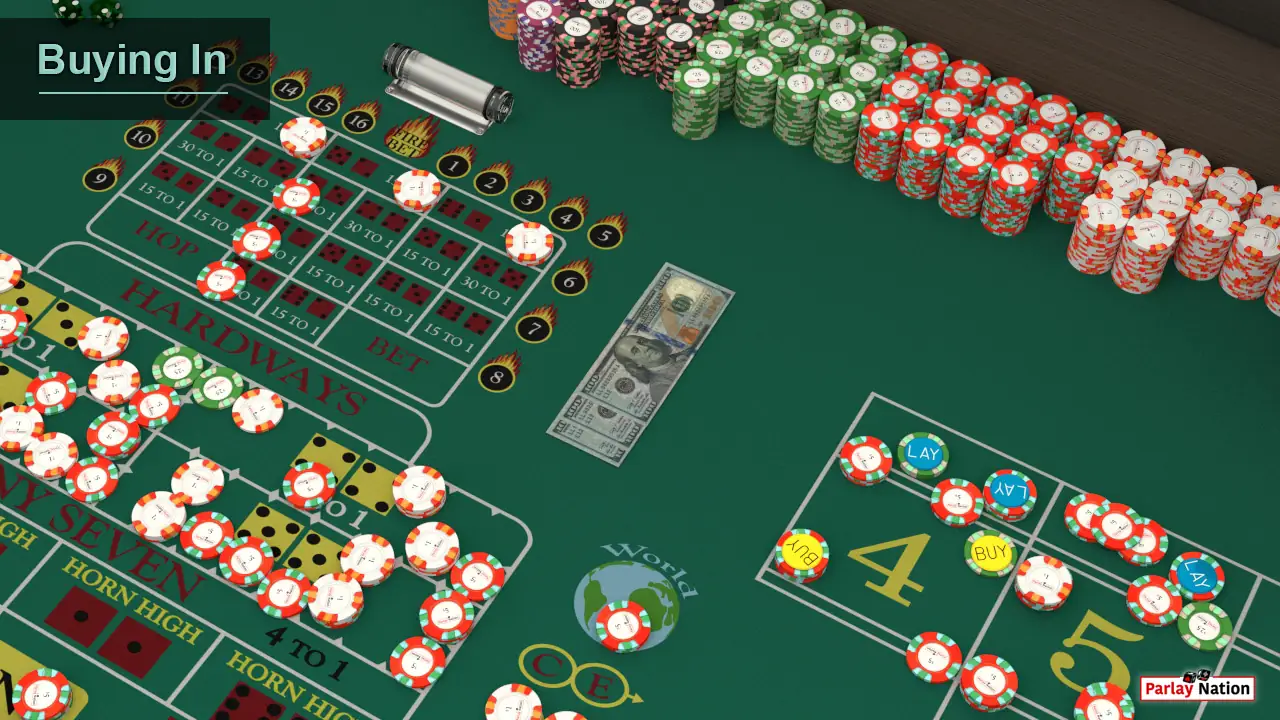
What Is it to "Color Up" at the Craps Table?
When it's time to go, please don’t walk away with the cheques unless you have a handful or less. It would be best to wait until the current roll has ended and it's a new Comeout Roll. If you color up in the middle of a roll, you are saying the shooter isn’t going to win, and you want to get out before they cost you any money. When the roll is over, tell the base dealer that you would like to "color up" and place your cheques on the table. you're doing this so you can convert your smaller cheques into larger ones to take to the cashiers' window.
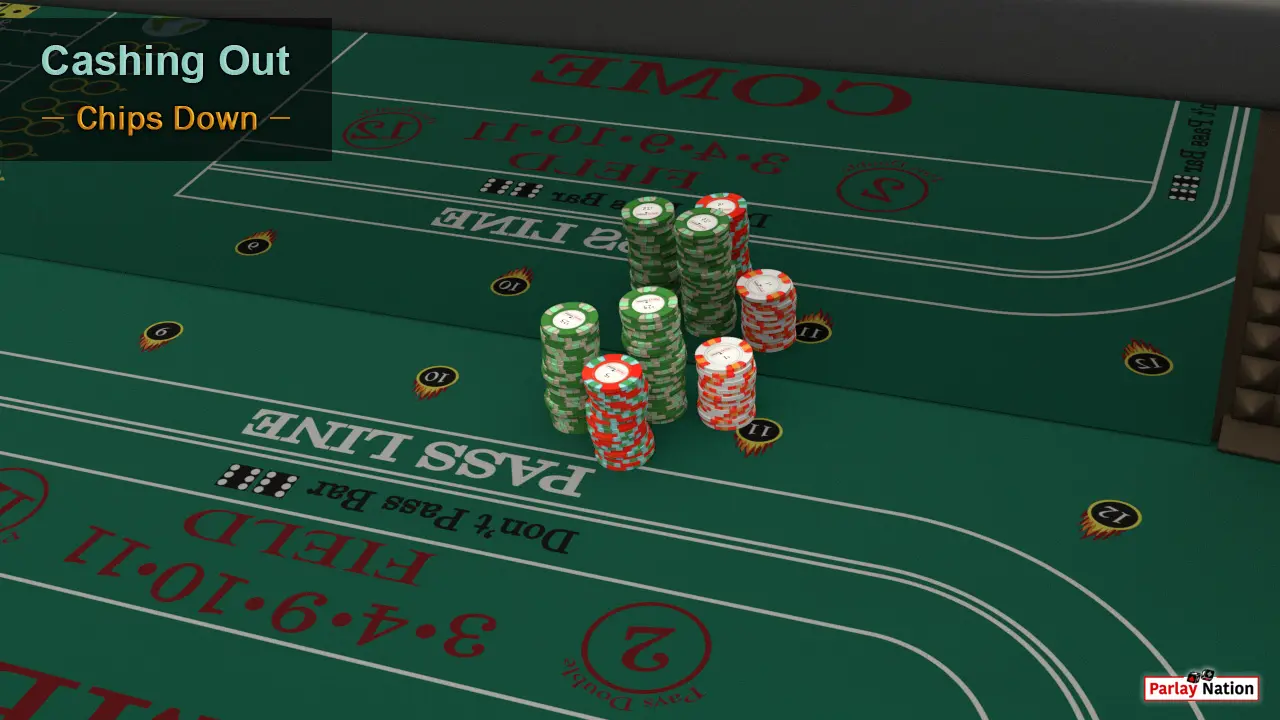
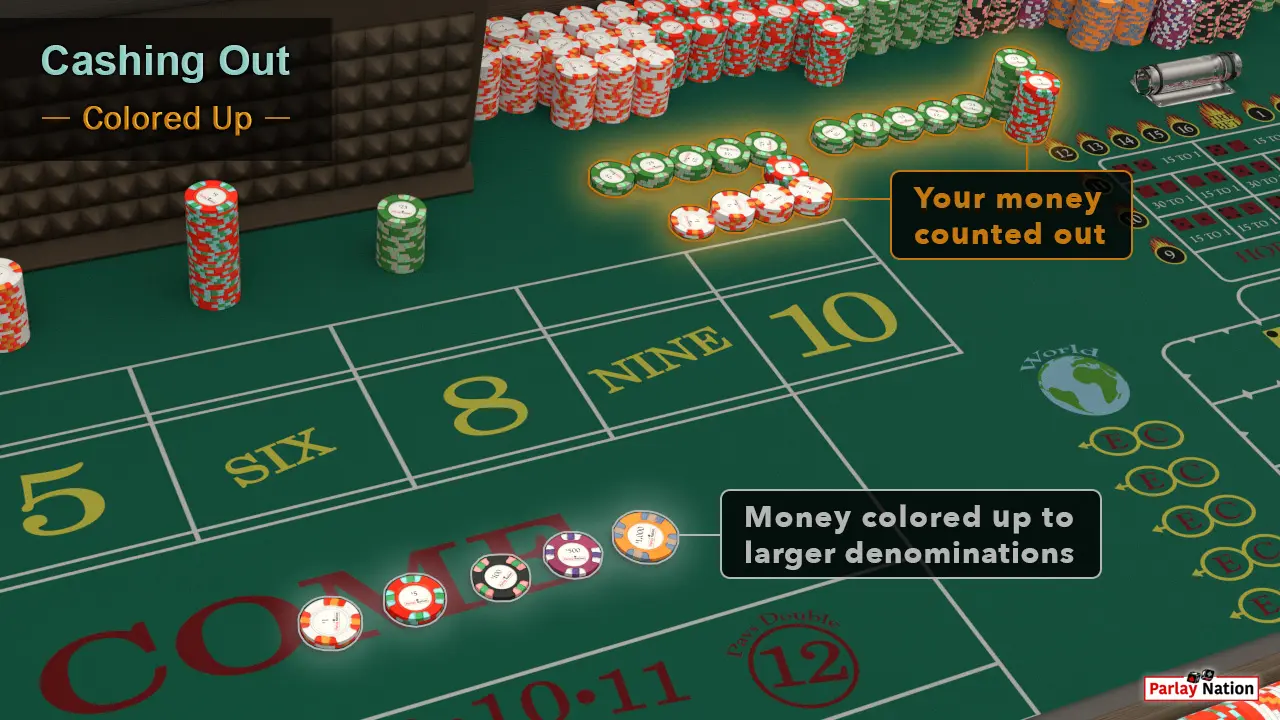
What's With the Number 7 in a Craps Game?
The number 7 is a double-edged sword. During the Comeout Roll, the players usually win. During the Intermediate Roll, it's usually how all the players lose, so they don't want to hear anyone say "seven."
When betting an Any 7, many players will use the phrase “big red” in place of “any seven” because it's written on the table in red letters. E.g., “Can I have $1 big red?” They phrase it that way as a courtesy to the other players, so they don’t hear “seven.” It's only ok for players to say “seven” during the Comeout Roll when most players are on the Pass Line, and it wins for them.
